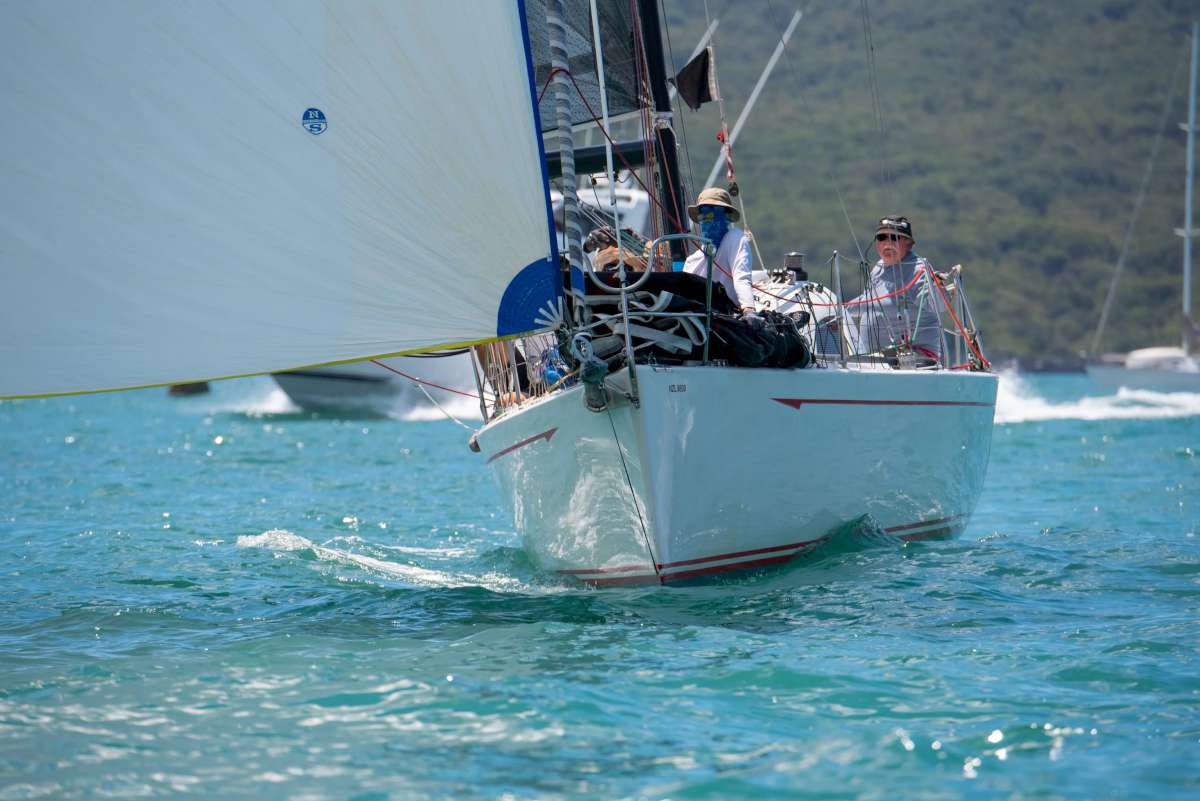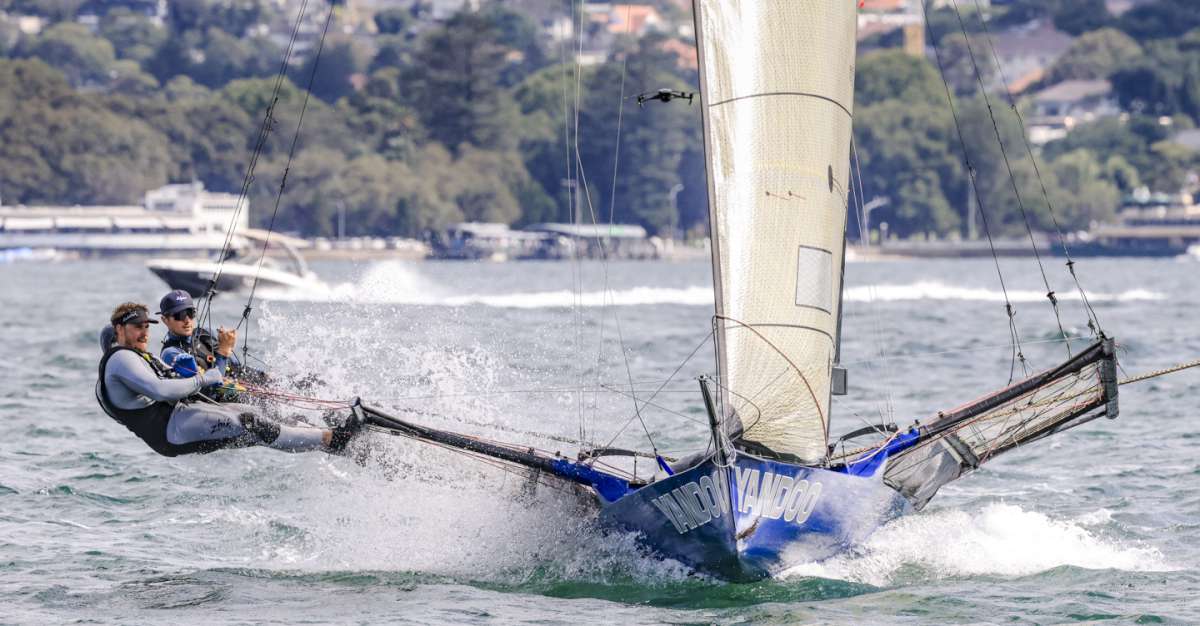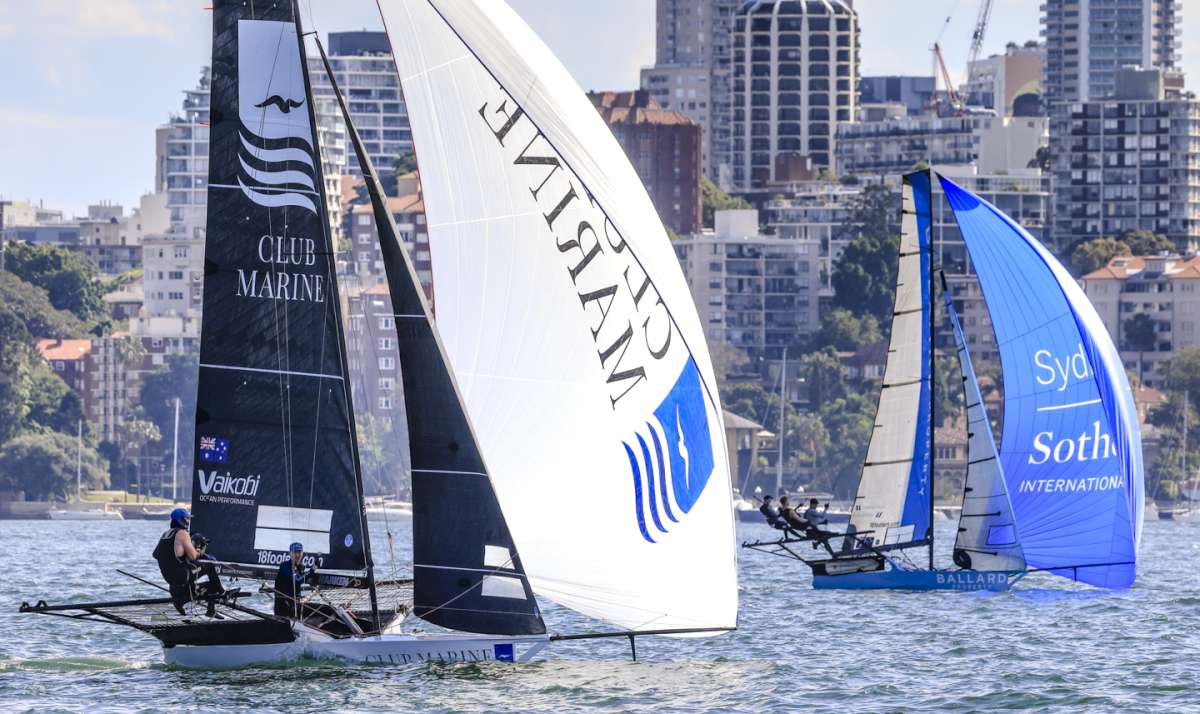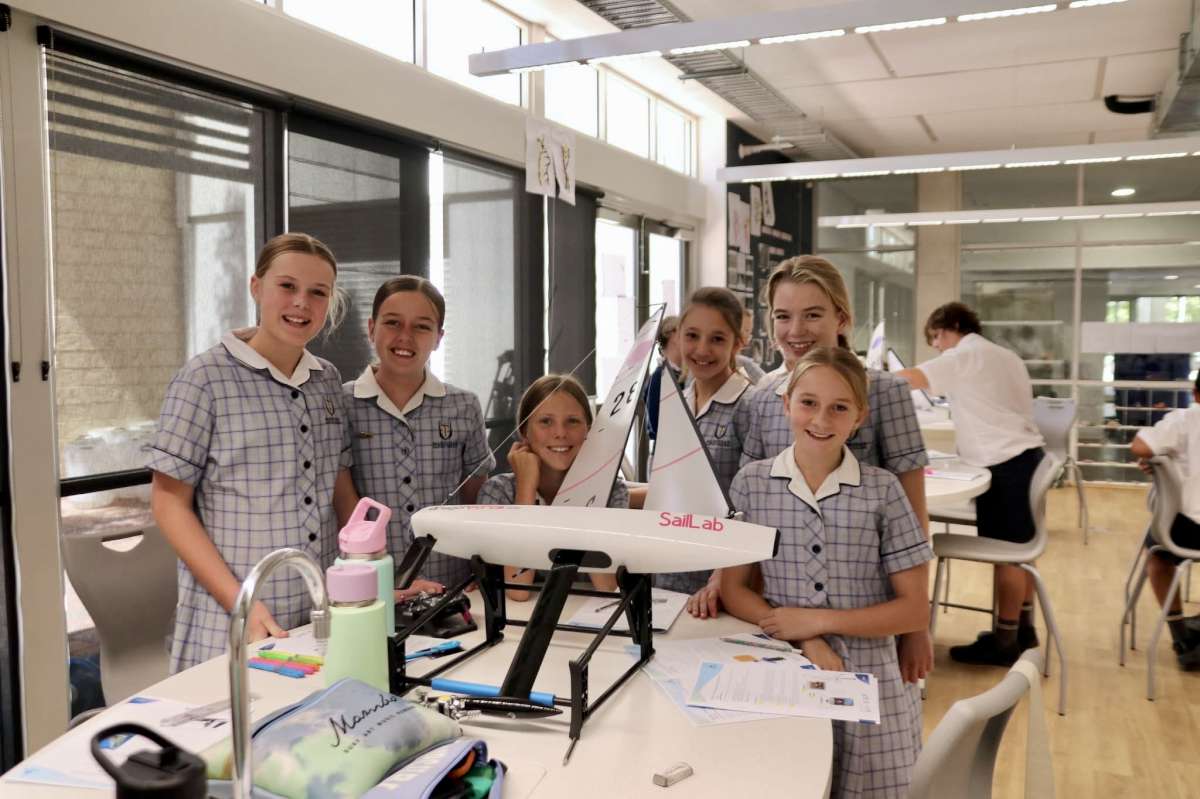As exciting as it is to fly coloured sails at sea, the reality is that most cruising yachts confine their experience to sheltered waters in clement conditions.
When it comes to downwind ocean sailing with an uncertain weather forecast, the last thing on most cruising yachtsmen and women’s minds is to fly a spinnaker, especially at night. My answer to this perennial problem, which I think could prove particularly helpful to lightly-crewed yachts, family sailors and long-haul passage makers, is the Simbo Rig (simple bow rig).
What is required are two identical jibs with the higher cut clew set on the genoa furler’s twin grooves and run on a single halyard.
Each sail will have its own set of jib sheets for which it is beneficial to have two sets of sheet cars and two sets of headsail winches.
The twin jibs fly together in harmony with noticeable additional benefits over flying a solo jib: one can rest the upwind leeward jib on the downwind sail to reroute sheets from outside to inside the cap shroud for closer sheeting if tightening up; the blanketed downwind jib sheet can also be rerouted.
Sheet cars can be adjusted, again without flogging sails or forfeiting speed. Finally, on heaving-to, one can sheet both jibs to respective sides to stop the boat accidentally tacking through the wind.
What to do
On bearing away to a run, one furls the twin jibs to raise two whisker poles, each with its own topping-lift and fore and aft guys made up to measured marks around the fore and midship cleats. This keeps the whisker poles at right angles to the yacht and level with the horizon, once rigged they are never adjusted. With the jib sheets running through the whisker pole ends, one returns to the cockpit to pull the jibs out to the respective whisker pole with the outer running sheet which leaves the opposing reaching sheet to cross over the foredeck and run lazy back to the cockpit on the other side of the boat.
An alternative option is to rig the weather whisker pole as outlined above whilst on the reach. On bearing off to a run, ease the mainsheet and haul the upwind leeward jib to weather via the whisker pole to redirect the wind into its leeward twin that does not need a whisker pole to set. Subsequently, the leeward sheet load can be temporarily restrained by its opposing reaching sheet to rig the whisker pole and run the slackened running sheet through the pole end. The reaching sheet can then be eased to return the load to the opposing running sheet to take over weather jib duties after a gybe.
It is possible to fly the rig dead downwind without poling out the twin jibs. For this you need to run the sheet cars forward to haul the clews down to straighten the leach and cup the sails. The regenerated apparent wind around the mast from the mainsail together with the true wind into the weather jib is sufficient to fly the twin sails unsupported. This can prove useful in certain circumstances, as indeed can the setting of just the weather whisker pole.
However, the twin poles’ rig always remains the preferred option as it provides better sail control, yacht mobility and averts foredeck work.
In a rising wind the twin jibs, unlike coloured sails, can be reefed from either side on the furler to suit prevailing weather conditions. One person can control the Simbo Rig from the cockpit, night or day, in fair or foul weather.
The only time one needs to leave the cockpit is to raise or stow the whisker poles.
To revert to a reach, one comes onto the wind to allow the backed weather jib to fly to leeward when the previously dormant opposing sheet becomes the dominant upwind jib/leeward sheet. The whisker poles can remain set until the apparent wind is 60 degrees off the bow.
To harden up further, one releases the jib sheets by retracting the whisker pole bolts and stow the poles. Conversely, on returning to a run, one bears away, releases the upwind jib/leeward reaching sheet to haul the sail across the foredeck to weather with the opposing running sheet via the weather whisker pole. A one man job in either direction.
Of course, many sailors have used the ‘barn door’ system of flying twin headsails downwind since time immemorial. However, only at the expense of striking the mainsail and scandalising one’s working rig, which can become an issue if urgently needing to revert to the working rig; in changed circumstances or at night, which requires crew to go onto the foredeck to strike spinnaker poles and weather genoa and reset the mainsail. Furthermore, with only two headsails set on opposing spinnaker poles, the yacht will roll considerably downwind and run the risk of dipping the poles into the sea.
With the Simbo Rig, one’s working rig is always at the ready to meet the unexpected and can be controlled by just one person to handle gybing, running, reaching and back to running without calling up off-watch crew.
Furthermore, one can hold the Simbo Rig in gale force winds in the comforting knowledge that it can be reefed or struck from the security of the cockpit.
There is no pressure exerted by the leeward whisker pole on the mast which translates into a substantially reduced downwind roll. All the power is contained within close proximity of the yacht with the whisker poles only measuring half the length of the jib’s foot from tack to clew.
The mainsail boom on the other hand is restricted to 45 degrees off the stern so that it does not directly oppose the pressure on the mast from the weather whisker pole which is always set at 90 degrees off the bow.
The Simbo Rig consists of one suit of working sails that will meet all likely requirements when passage-making.
Overcoming the need for additional crew which, apart from the peace and quiet and a feeling that one’s privacy has not been invaded, also makes the stocking of provisions easier.
What’s not to like?
Iain Simpson
























